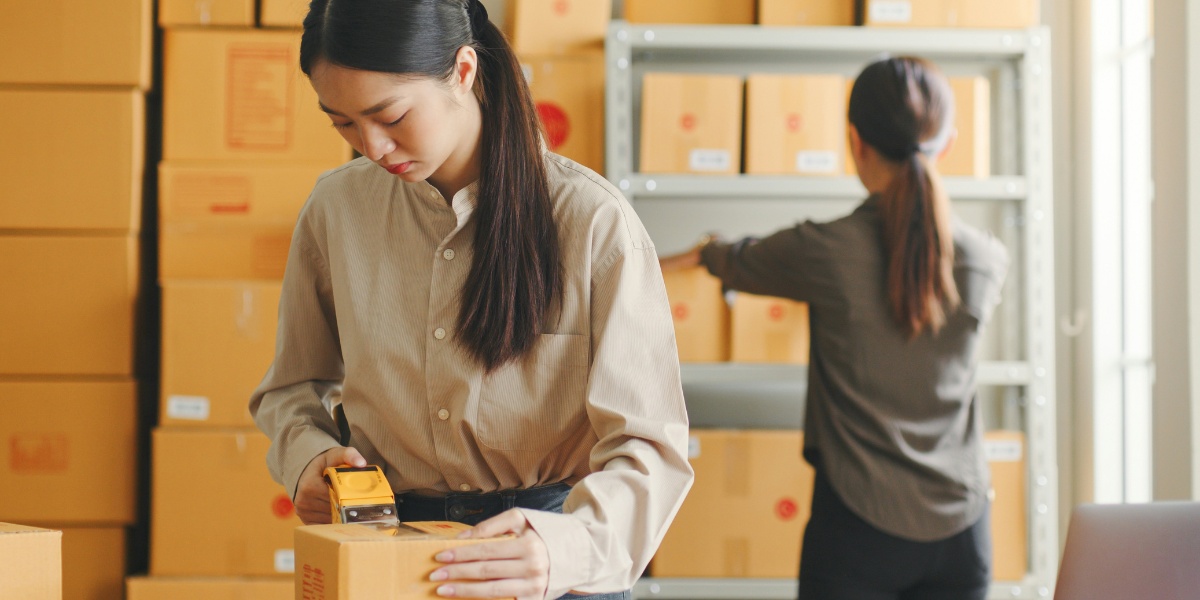Green logistics is becoming a central part of how modern e-commerce operates. As online shopping continues to grow, so does the pressure to make supply chains more sustainable. From packaging to delivery routes, every step in the process affects the environment. Businesses are starting to recognize that efficiency and sustainability can go hand in hand. For those trying to balance fast shipping with eco-conscious practices, the challenge can feel overwhelming, but it’s not impossible.
Why Green Logistics Matters in E-commerce
E-commerce depends on logistics. Products move from warehouses to doorsteps, often crossing long distances and passing through multiple hands. That movement requires energy, materials, and coordination. Traditional logistics systems focus on speed and cost, but they often overlook environmental impact. Green logistics shifts that focus. It looks at how goods are moved, stored, and packaged, and asks whether those choices are sustainable.
This matters because e-commerce generates a lot of waste. Cardboard boxes, plastic fillers, and single-use packaging pile up quickly. Delivery vehicles contribute to traffic and emissions. Warehouses consume energy around the clock. Green logistics tries to reduce that footprint. It encourages smarter packaging, cleaner transportation, and more efficient operations.
For businesses, this shift isn’t just about ethics. It’s about staying competitive. Customers are paying more attention to how products are delivered. They want to know that their purchases aren’t harming the planet. Green logistics helps companies meet those expectations while improving their own systems.
Packaging Is a Key Part of the Conversation
One of the most visible parts of e-commerce logistics is packaging. It’s the first thing customers see when their order arrives. If it’s excessive, wasteful, or hard to recycle, it leaves a bad impression. Green logistics encourages companies to rethink packaging. That means using materials that are recyclable, biodegradable, or reusable. It also means designing packages that fit the product better, reducing the need for fillers and oversized boxes.
This isn’t just about aesthetics. Smarter packaging reduces shipping costs, saves storage space, and cuts down on waste. It also shows customers that a company is thinking about more than just profit. That kind of attention to detail can build trust and loyalty.
Some businesses are going further by redesigning their entire packaging process. They’re working with suppliers to source better materials, training staff to pack more efficiently, and investing in systems that track packaging waste. These efforts align with broader CSR initiatives for sustainable growth that many companies are now prioritizing.
Transportation Choices Affect More Than Delivery Speed
Fast delivery is a major selling point in e-commerce, but it comes with a cost. Delivery trucks, planes, and vans burn fuel and contribute to emissions. Green logistics looks at how transportation can be cleaner and more efficient. That might mean using electric vehicles, optimizing delivery routes, or consolidating shipments to reduce trips.
Some companies are experimenting with local hubs that shorten delivery distances. Others are partnering with carriers that offer carbon-neutral shipping options. These changes don’t always happen overnight, but they show a commitment to reducing environmental impact.
Transportation also affects urban areas. Delivery traffic can clog streets, increase noise, and strain infrastructure. Green logistics encourages smarter planning to minimize those effects. That includes scheduling deliveries during off-peak hours, using bikes or smaller vehicles in dense areas, and coordinating with local governments to improve access.
Warehousing and Inventory Management Play a Role
Warehouses are the backbone of e-commerce logistics. They store products, process orders, and prepare shipments. But they also consume energy, generate waste, and require space. Green logistics looks at how warehouses can operate more sustainably. That includes using energy-efficient lighting, recycling materials, and designing layouts that reduce movement and waste.
Inventory management is another piece of the puzzle. Overstocking leads to waste, while understocking causes delays and inefficiencies. Smart inventory systems help businesses balance supply and demand without overloading their warehouses. They also reduce the need for emergency shipments, which are often less efficient and more polluting.
Some companies are investing in automation to improve warehouse efficiency. Others are using data to predict demand and adjust inventory levels. These strategies help reduce waste and improve service, making logistics more sustainable and reliable.
Sustainability Is Becoming a Competitive Advantage
Green logistics isn’t just a trend, it’s becoming a standard. Customers are asking more questions about how products are made and delivered. They want transparency, accountability, and action. Businesses that embrace green logistics can stand out in a crowded market. They can show that they care about more than just profit and that they’re willing to invest in better practices.
This shift is also creating new opportunities. Sustainable logistics can lead to cost savings, better customer relationships, and stronger brand identity. It can also attract talent, especially among workers who value environmental responsibility. Many companies are finding that green logistics aligns with their broader goals and helps them grow in a thoughtful way.
Women entrepreneurs are playing a key role in this shift. Their leadership in sustainable business practices is helping reshape how logistics is approached. They’re bringing fresh ideas, strong values, and a commitment to long-term impact. Their work shows that sustainability isn’t just possible, it’s powerful.
Green Logistics Is a Shared Responsibility
Making logistics more sustainable isn’t just the job of one department. It requires coordination across teams, suppliers, and partners. Everyone involved in the supply chain has a role to play. That includes sourcing materials, designing packaging, planning transportation, and managing inventory.
It also means listening to customers. Their feedback can guide improvements and highlight areas that need attention. Businesses that stay open to change and willing to adapt tend to make the most progress.
For those feeling overwhelmed by the complexity of logistics, that’s understandable. It’s a big system with many moving parts. But small changes can add up. Whether it’s switching to better packaging, optimizing delivery routes, or improving warehouse efficiency, every step counts.
Green logistics is about making thoughtful choices. It’s about balancing speed, cost, and sustainability in a way that supports both business goals and environmental responsibility. As e-commerce continues to grow, those choices will shape how the industry evolves, and how it’s remembered.










